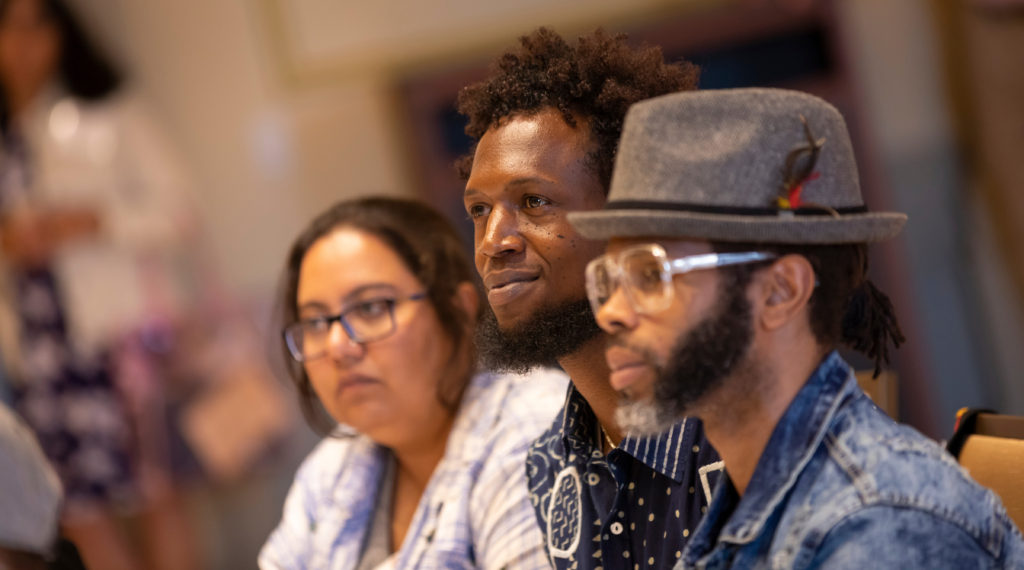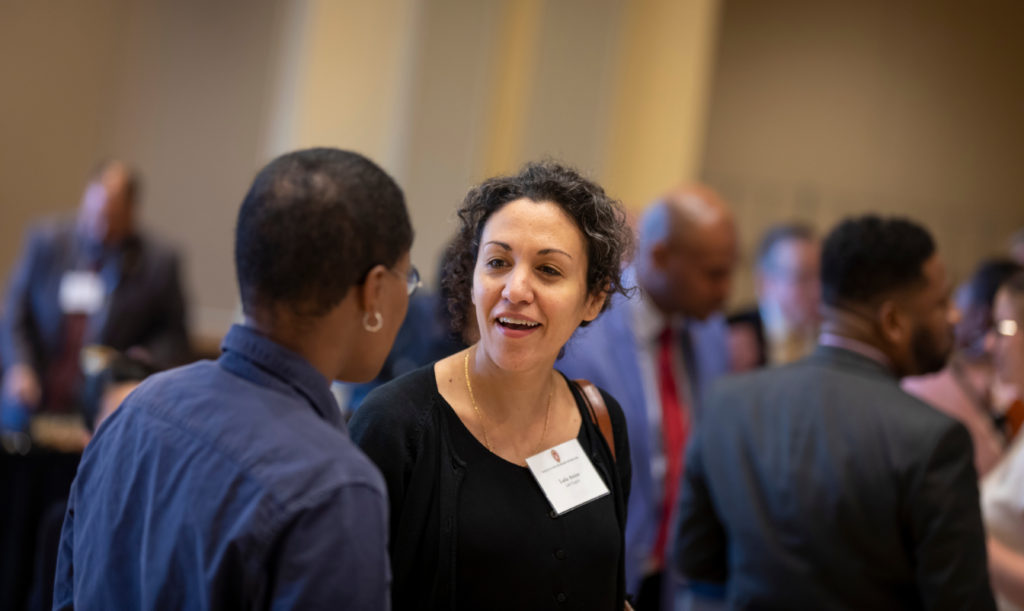The University of Wisconsin-Madison annual fall Faculty of Color Reception this year welcomed more than 60 newly-hired faculty of color to the campus and recognized more than two dozen others who were promoted at assistant and full professor over the past year.

Chancellor Rebecca Blank summarized UW-Madison’s progress in diversifying its faculty by stating that more than 127 new faculty of color have been hired at the university in the past three years.
“We’re happy to say we’re pleased that our incoming faculty cohorts keep growing as well as the promotions to associate and full professor,” said Patrick J. Sims, deputy vice chancellor for diversity & inclusion and chief diversity officer, who co-hosted the event with Terry Warfield, secretary of the faculty and professor in accounting at the Wisconsin School of Business.

“Meeting, greeting and networking among our diverse faculty is key to creating a welcoming campus climate,” Sims said. “We’re reinforcing a sense of collegiality and community in spite of the size of our campus, particularly our faculty of color.”

In 2016, a Campus Climate Survey documented students’ need and desire to have a more diverse faculty, Sims said. It is the university’s responsibility to not only diversify the faculty, but also ensure more diversity among STEM students and the graduate pipeline to STEM research and teaching, he added.

The national movement to diversify STEM fields is being led by the National Science Foundation’s Aspire Alliance. The Alliance has given UW-Madison a 5-year grant to support its plan to make every aspect of STEM more inclusive.

This past year, the second cohort of faculty Diversity Liaisons was selected for an initiative shared by Sim’s office and the vice provost for faculty and staff (VPFS). The goal of the Diversity Liaison Project is to help create an educational environment that is conducive to everyone’s best learning and professional advancement by providing a hands-on approach to helping campus leaders better understand and implement the best practices to integrate diversity, equity and inclusion in the classroom and beyond.

Sims and vice provost for faculty and staff, Michael Bernard-Donals lead workshops designed to help participants to improve their inclusive communication skills and cross-cultural competencies, increase their awareness of issues that can compromise student success and access to learning environments, and create a more welcoming campus climate.
Another campus initiative, Teaching and Learning Collaborative, is taking the lead on establishing best practices for inclusive teaching – especially in STEM-related topics by focusing on how to teach STEM topics in way that will attract a more diverse selection of thinkers and students, Sims said.
“This is a critical component of preparing our students for a global society where diversity and inclusion in research, teaching and the workplace and is more important than ever,” he said.